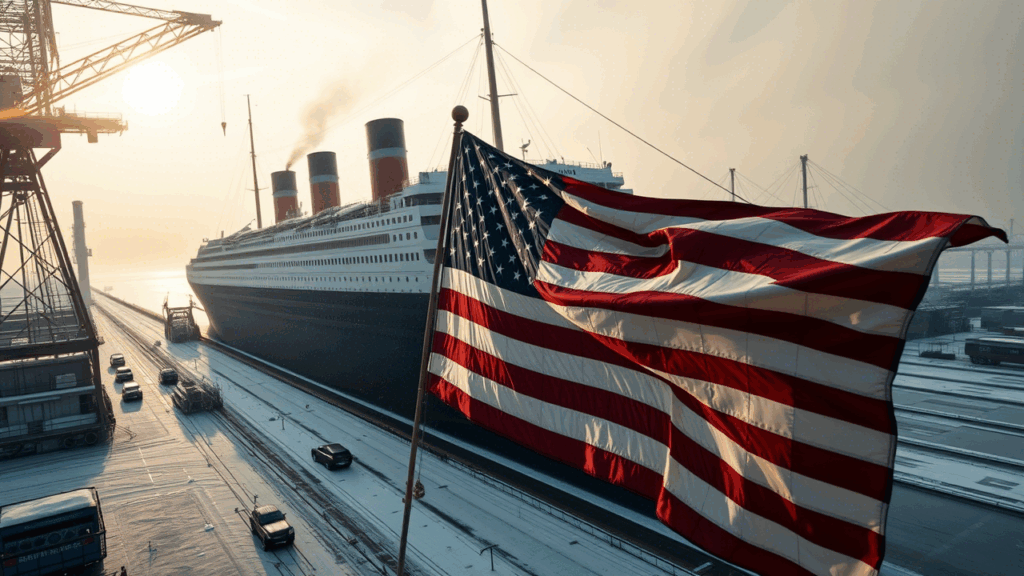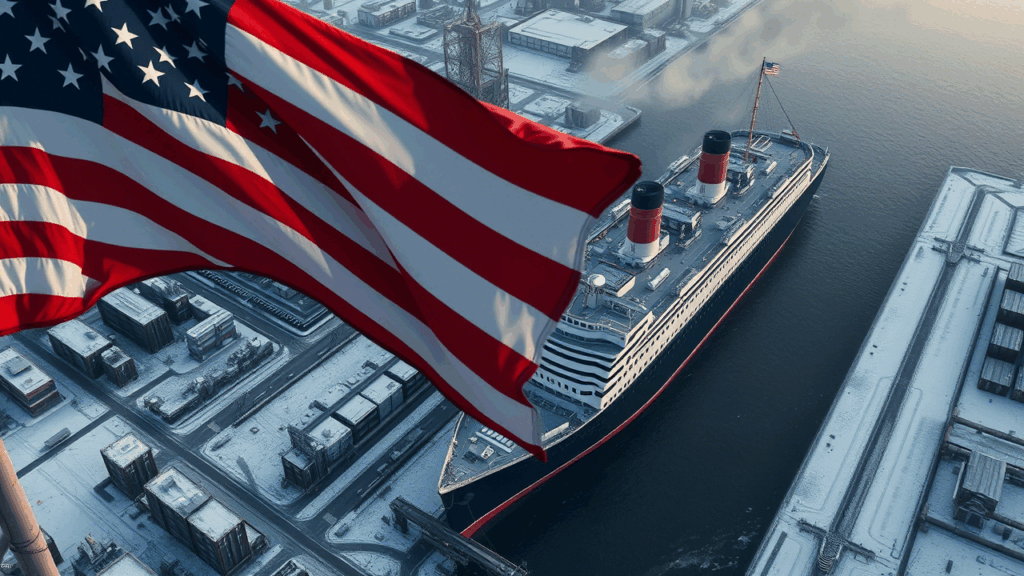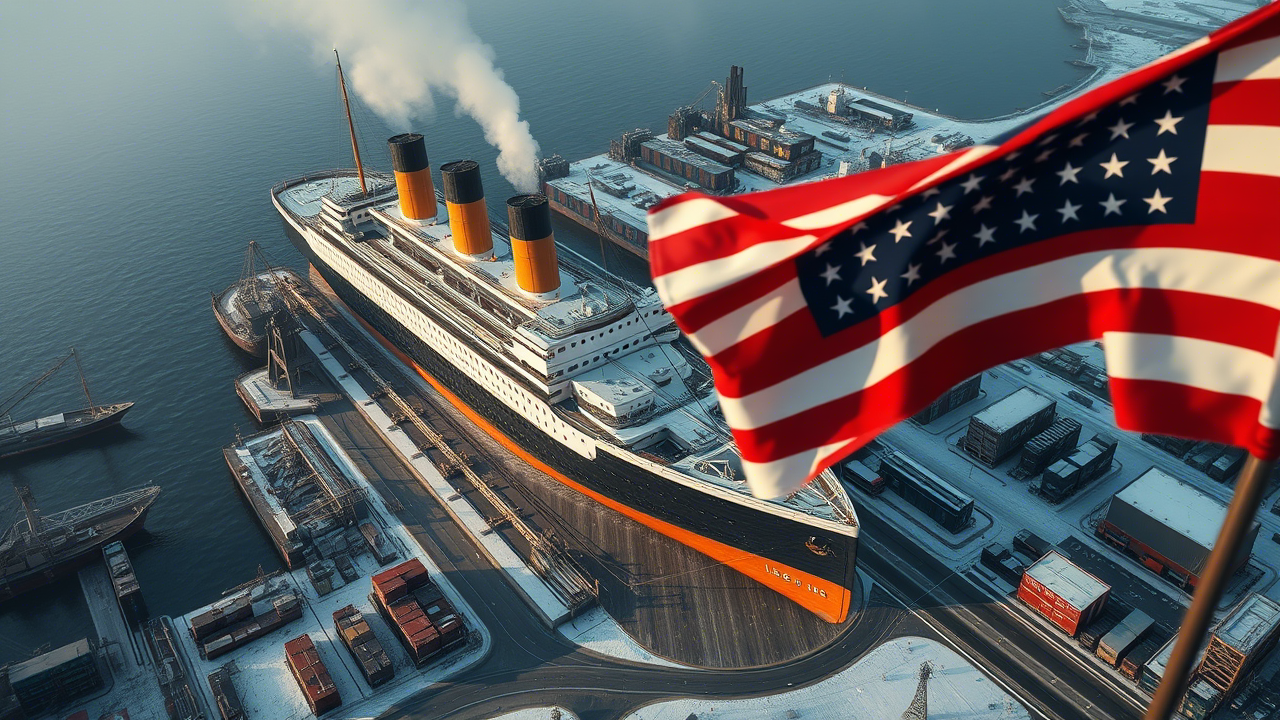Can a Ship Become a Reef?
The SS United States artificial reef project is one of the most ambitious and captivating marine transformations in history. At first glance, the idea of sinking a luxury ocean liner may sound controversial, even outrageous. But dig deeper, and it becomes clear that this eco-friendly initiative has more depth literally and figuratively than meets the eye.
Why the SS United States?
Constructed in the early 1950s, the SS United States wasn’t just a ship was a legend. Designed by William Francis Gibbs, it represented American ingenuity, holding the transatlantic speed record since 1952. More than just a symbol of post-war excellence, it once carried celebrities, immigrants, and diplomats across the ocean in unmatched luxury.
Yet, like many icons of its era, it was eventually outpaced by technology. By 1969, the rise of commercial aviation made it obsolete. Decades of being docked, sold, and abandoned followed, despite valiant efforts by the SS United States Conservancy to preserve the ship. Restoration costs skyrocketed, and practical solutions became harder to justify until now.
Is Sinking the Ship a Waste or a Visionary Plan?
That question has divided historians and environmentalists alike. But the plan by Okaloosa County, Florida, to turn the SS United States into an artificial reef is more than just a creative solution it’s a lifeline for both marine life and local tourism.
Rather than allowing the ship to rot at a pier in Philadelphia, the county acquired it for $1 million in 2024. The goal: to create the world’s largest artificial reef. This decision wasn’t made overnight. It was carefully planned, and structured around environmental safety, economic development, and marine ecosystem enrichment.

What Makes It Eco-Friendly?
Transforming the SS United States into an artificial reef isn’t as simple as dragging it into the ocean and letting it sink. It requires an intensive environmental remediation process. Since arriving in Mobile, Alabama, in March 2025, the ship has been undergoing extensive cleaning. All hazardous materials oil, lead, asbestos, and fuel are being meticulously removed. Wiring, upholstery, and other non-metal parts are stripped to avoid pollution.
Strategically placed holes are being cut into the hull to ensure the vessel sinks upright and remains stable underwater. These entry points will allow sea life to flow in and out naturally, turning the hollow vessel into a vibrant ecosystem.
By the time it is lowered into the Gulf of Mexico, this former luxury liner will be transformed into a safe, clean structure that supports coral growth, fish breeding, and overall biodiversity. In every aspect, this project is being designed to be as eco friendly as possible.
Where Will the Ship Rest?
The SS United States will be submerged approximately 20 nautical miles off Destin-Fort Walton Beach in Florida. The area already hosts a thriving network of artificial reefs, and adding such a large, iconic vessel will only expand its potential.
The ship will rest in 180 feet of water, with its upper decks sitting about 55 to 60 feet below the surface. That depth is optimal not too shallow to interfere with boat traffic, but not too deep for recreational divers. Both novice and seasoned divers will be able to explore this submerged marvel, drawing tourism dollars from across the globe.
Will It Help the Local Economy?
Without a doubt, yes. This project isn’t just about preserving history or helping the environment it’s a calculated move to boost the local economy. Funded by bed tax revenue from short-term rentals, the reef is expected to generate millions annually. Dive tours, fishing expeditions, and increased hotel bookings are just the beginning.
Even more exciting is the creation of a land-based museum in Destin-Fort Walton Beach. Developed in partnership with the SS United States Conservancy, the museum will preserve the ship’s rich legacy. Visitors can learn about its record-breaking voyages, explore artifacts, and understand the transition from ocean liner to reef.

What Are the Risks and Objections?
While the benefits are clear, the project has not been without opposition. Some groups argue that the ship should be preserved as a floating museum. A lawsuit was even filed to block the sinking, although the court’s decision is still pending as of late April 2025.
Environmental concerns also exist. Sinking such a massive structure raises questions about long-term seabed impact and local marine balance. However, officials are coordinating closely with environmental agencies to minimize any potential harm. Every effort is being made to ensure this artificial reef benefits nature rather than disrupting it.
Also Read :https://globaltrek.co.uk/rescue-hi-surf/
Is This the Future of Shipwrecks?
The SS United States artificial reef might become a blueprint for future maritime preservation. In an era where restoring massive historical vessels is often financially unfeasible, this project offers a balanced alternative. It honors the past, enriches the present, and helps preserve the marine future.
Rather than leaving old ships to rust in empty docks or scrapping them entirely, turning them into thriving habitats is both sustainable and visionary. It’s a merger of history, ecology, and innovation all under the sea.
Bottom Line: Understand it. Manage it. Don’t fear it. Let Service Host: Network Service work with you—not against you.
Final Thought: Is It Just a Sunken Ship, or a Living Legacy?
That’s the question every reader should walk away with. The SS United States artificial reef project represents more than the sinking of a ship. It is a rebirth that merges memory with marine life. In a world that too often lets the old decay, this initiative offers a rare kind of respect. It tells us that what once sailed above the waves can now protect life below them.
Would you dive in to see history resting beneath the surface?



